Camping and hiking dry bags are a vital piece of outdoor gear. While dry bags can be incredibly diverse, the main job is to keep your gear dry. Whether you’re camping, hiking, or kayaking, they need to be durable and submersible. Your dry bag should stand up the thorny bushes and lean up against sharp rocks along the trail. As well as pounding water on the river.
What’s the correct size of the dry bag? You’ll probably end up with a few different sizes and different options. This guide is made to show you how much gear you can stuff into each of the commonly sized dry bags.
There are few oddball sizes from different manufactures, but generally, 2 liters to 30 liters dry bags with a shoulder strap are manageable. When we get into larger sizes above 30 liters, they should include padded shoulder straps and be a dedicated backpack.
All of the dry bags pictured here are thick, 500D Tarpaulin PVC 0.50mm bags. Note that all the weights I include are for these strong dry bags, but they also make ultralight dry bags that are much lighter, sacrificing durability. The reason I chose this material is that it’s built like a tank. They’re thick, the last years, and stay waterproof.
Every size dry bag also included a shoulder strap to carry easily. They are great for using as a day bag after you set up camp, and you just want to do some light hiking around. I use a 5 liter dry bag most of the time just as a fishing bag to keep bait and tackle in. Depending on the amount of tackle you have any size should work well for this.
After you find the size that best fits your needs, I also wrote The Ultimate Guide to Waterproof Dry Bags with everything you would ever want to know about dry bags.
2-liter Dry Bag
This is the smallest size dry bag I would buy. Sea to summit sales a 1 liter but at that size, you might as well to stick to a Ziploc bag and save our money. This size is great for small items like wallets, keys, and your cell phone. They’re easy to keep strapped on your hiking backpack for quick access when you need to take a quick picture with your phone.
Having a few different small bags inside your backpack helps separate smaller items for quick access. I like to use different color bags for this, so I’m not checking every small bag for the item I need at that time.
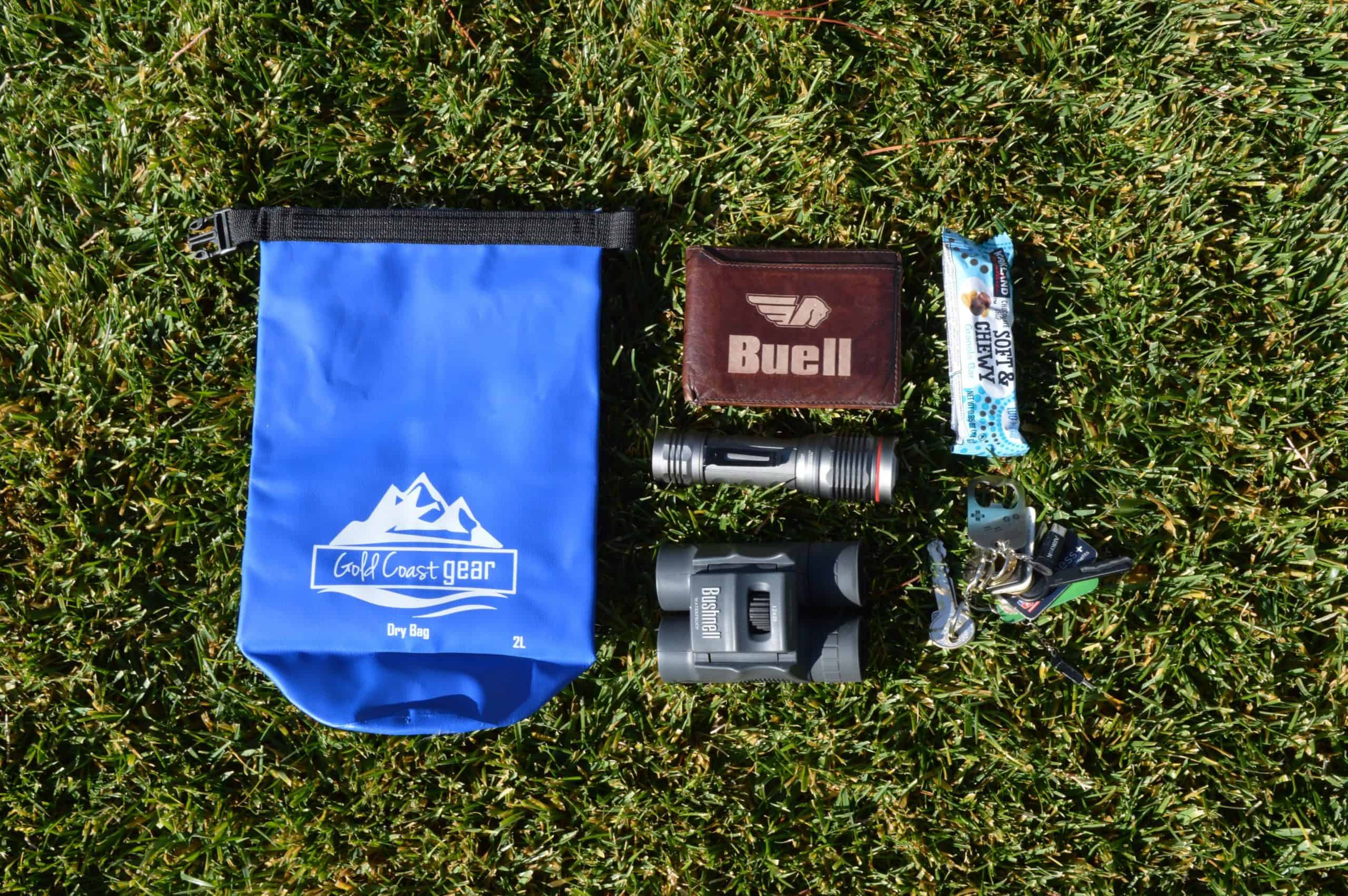
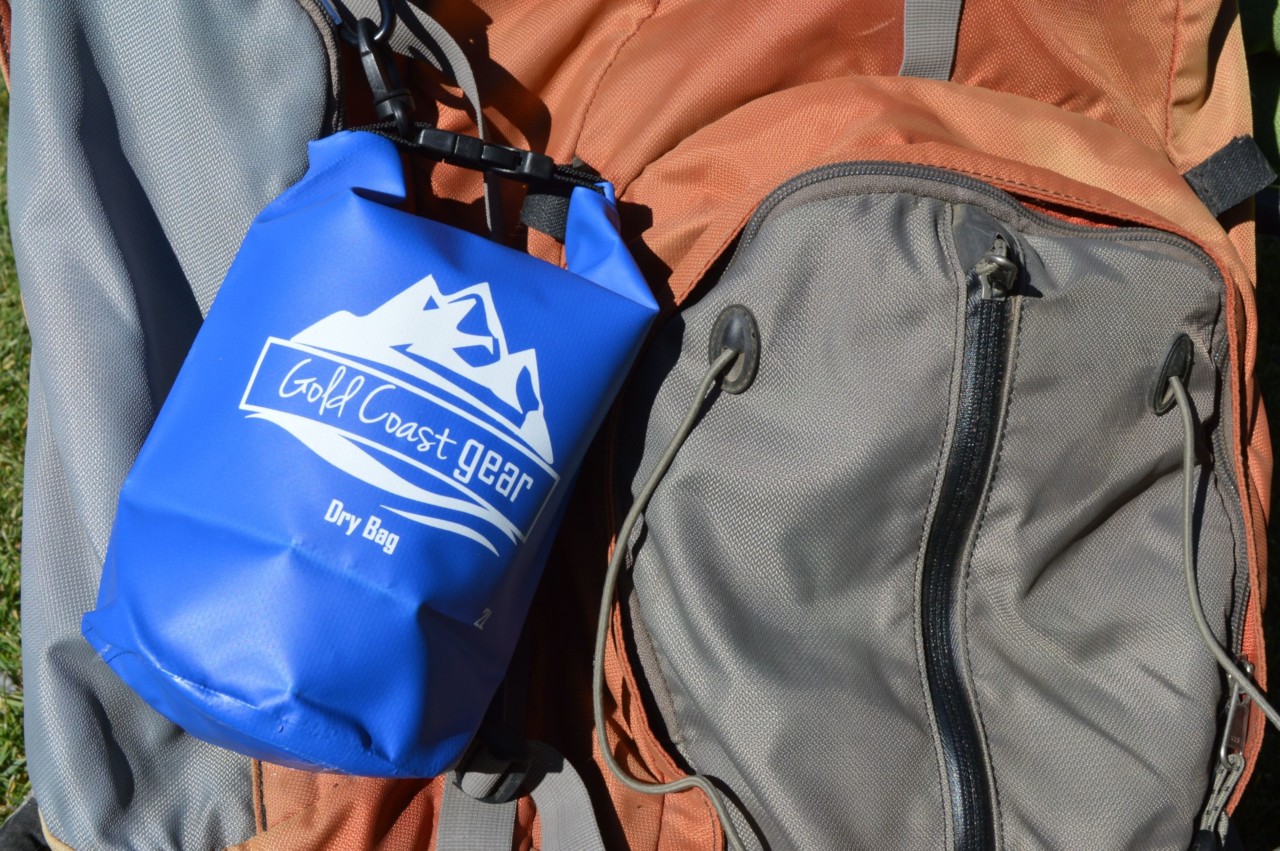
5-liter Dry Bag
This size is a sweet spot for most people. We’ve been selling dry bags for a few years now, and this is by far the most popular size (in color black if you’re curious). It’s still small enough to strap on your backpack, as well as rolling up 2 in your backpack. With this size, you can easily keep a camping stove or bring along your larger camera like a DSLR.
If you’re not sure about what size you’re going to need when first picking out a dry bag, I recommend 5 liters. Even if it turns out that the size is too small and you need a bigger bag, it will still be easy to find a use for a 5 liter dry bag.
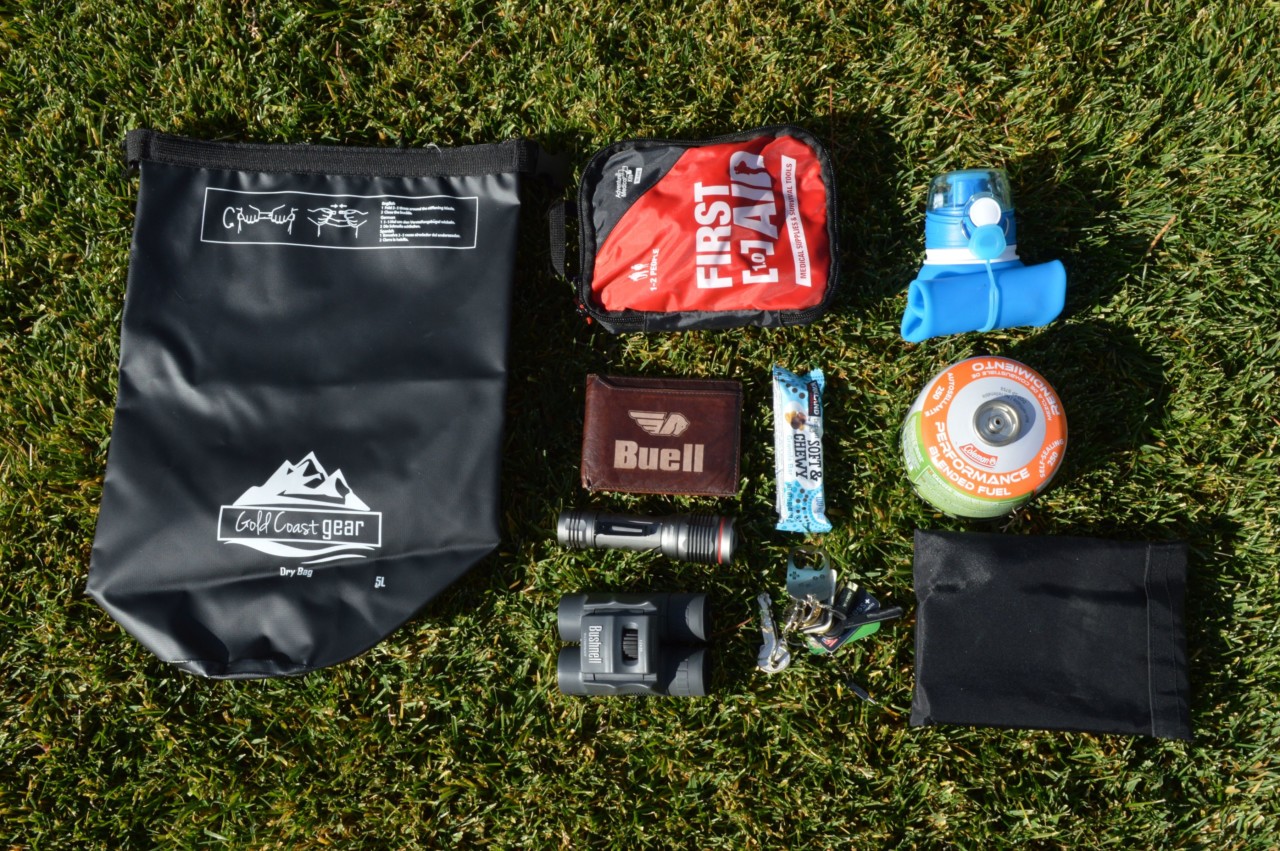
10-liter Dry Bag
Big but not too big. Stuff your overnight clothes as well as your larger camera in here. I always roll up a light windbreaker to wear after I set up camp, so it’s crucial that it stays dry. With 10 liters, there will be plenty of room for some backpacking luxuries.
At this size, it makes an excellent day bag to go with you when you’re exploring, and you don’t want to carry your heavy hiking backpack. With 2 and 5 liters, a shoulder strap isn’t completely necessary, but a large 10 liters dry bag it’s a must-have.

20-liter Dry Bag
At this size, remember that you could roll down a larger dry bag to any size you want while having the option for larger capacity. If you’re unsure and this a 20 liter will be too large, just remember it’s an option to roll down further than the recommended 3 times. I wrote a short article about the proper way of closing a dry bag here.
I would definitely want a strap at 10 or 20 liters for day hiking. Having a shoulder strap included with your dry bag is also nice to hang on a tree while I camp to pull gear out as you need it.
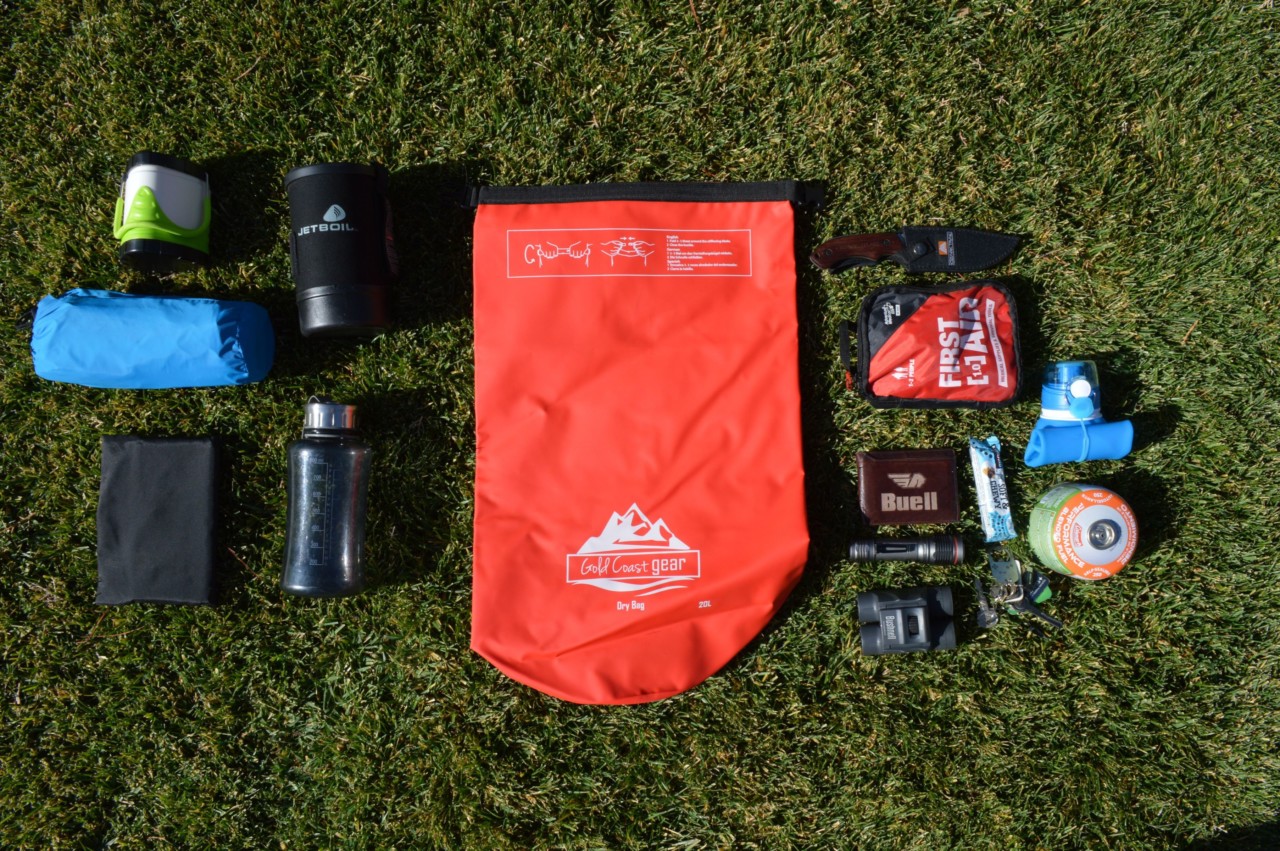
30-liter Dry Bag
This is the size of a small school backpack. You can see all the gear that fits inside, and a sleeping bag can also be comfortably stuffed inside a 30 liter dry bag as well. Sleeping in a wet bag all night sounds like a horrible way to freeze, so ensuring it stays dry no matter what is a must.
A 30 liter dry bag that doesn’t have to shoulder straps it’s kind of a bare-bones option. With only one shoulder strap, the bag will start to feel heavy while day hiking. While I have used a 30 liter dry bag, having two or three separate 10 liters is a good option if you have a lot of gear and want to stay organized. With a 30 liter dry bag, you should be able to fit all your camping gear and still have a little room for some luxury items.
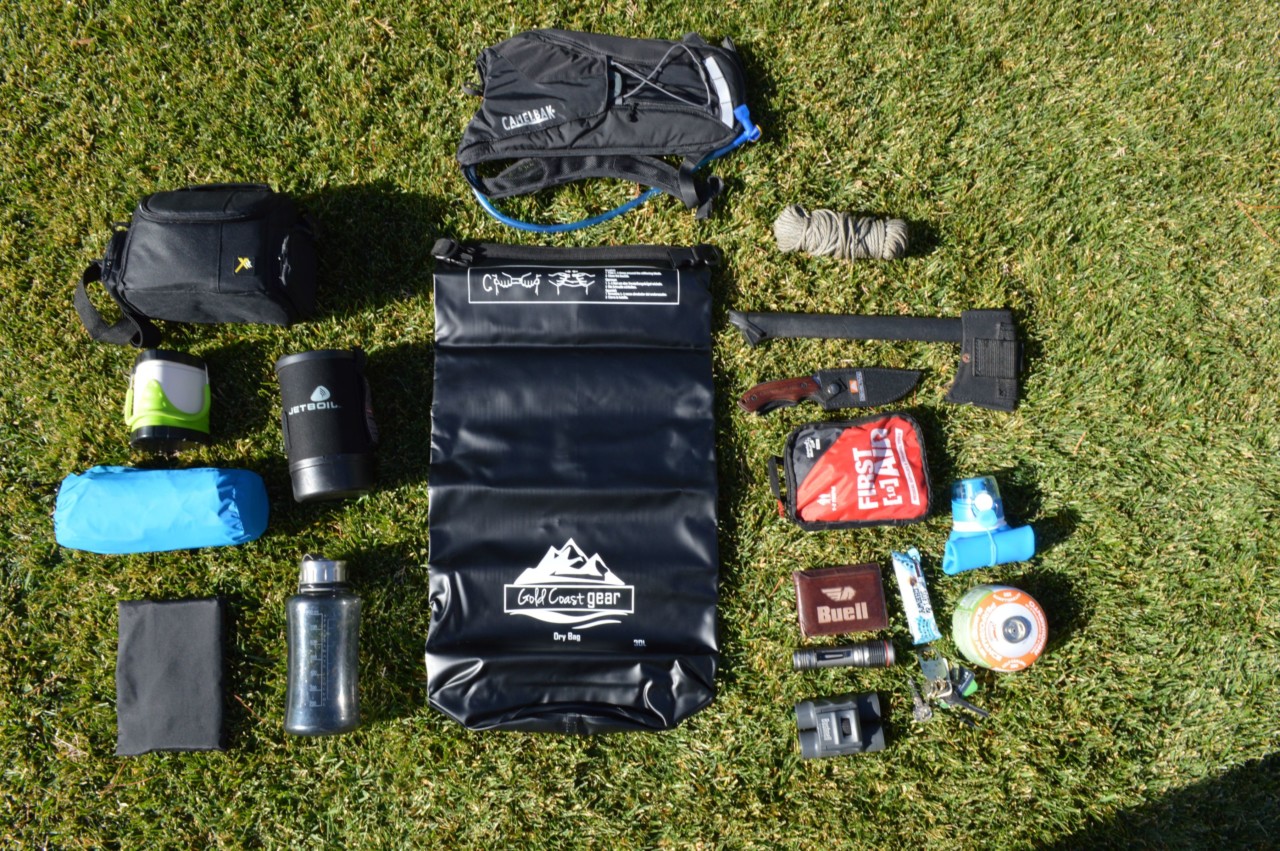
30-liter and Larger Dry Bag Backpack
A dry bag backpack is a great option for kayaking or other water sports. These large bags will keep your gear dry and all in one place. With no internal frame, the backpack can get weighed down with little weight on the hips.
This particular one does have a hip and sternum strap. Only the shoulder straps and back have padding. From the picture, you can see everything I put inside this backpack. Theirs also plenty of features on the outside for fishing poles and water bottles. These waterproof backpacks also come with a 2 liter dry bag with matching color.
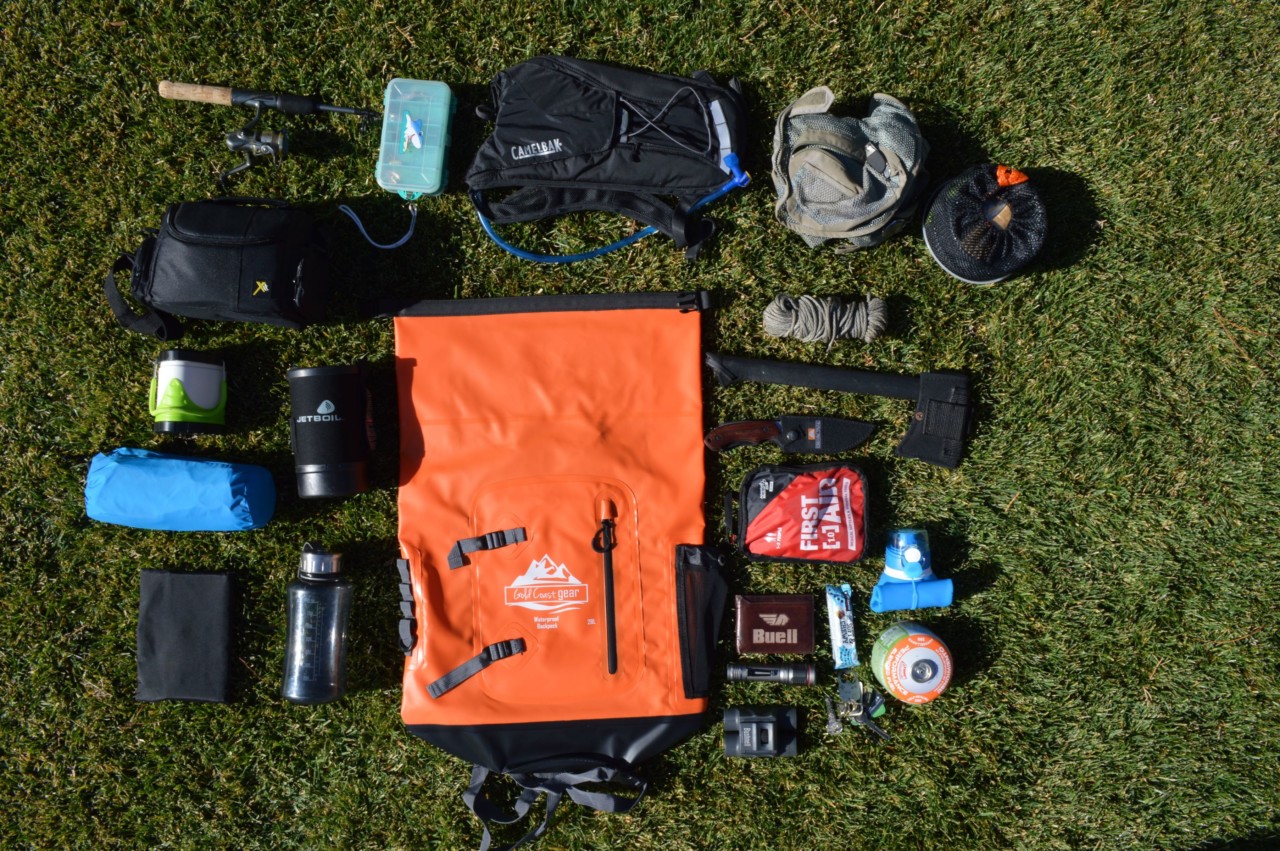
Backpack Organization
Having a few smaller to larger bags will help in backpack organization. Keeping all of your nighttime clothes and items in one bag will help in quickly grabbing what’s needed. I like to keep my toiletries in one bag on the outside of my pack for quick access.
This is in case my camping soap and toothpaste leak. I wouldn’t want to have liquid soap all over my nighttime clothes or my sleeping bag. Use different color dry bags if you’re carrying the same size bag. Black is the most common color, but having different color bags will help to find gear quickly.
Stuff Sacks
While this article is about dry bags, Stuff Sacks are a great way to stay organized as well. If you know, something has to stay dry and has the potential to leak then use a dry bag. If not, having a few stuff sacks will do the job.
I typically carry three in my backpack. These three little bags are of different colors. I can quickly determine which items are in separate bags, just like how I use dry bags. While they’re not waterproof, they have a drawstring for quick access. Stuff sacks are typically cheaper than dry bags and lighter too. The trade-off is that they’re not as robust.
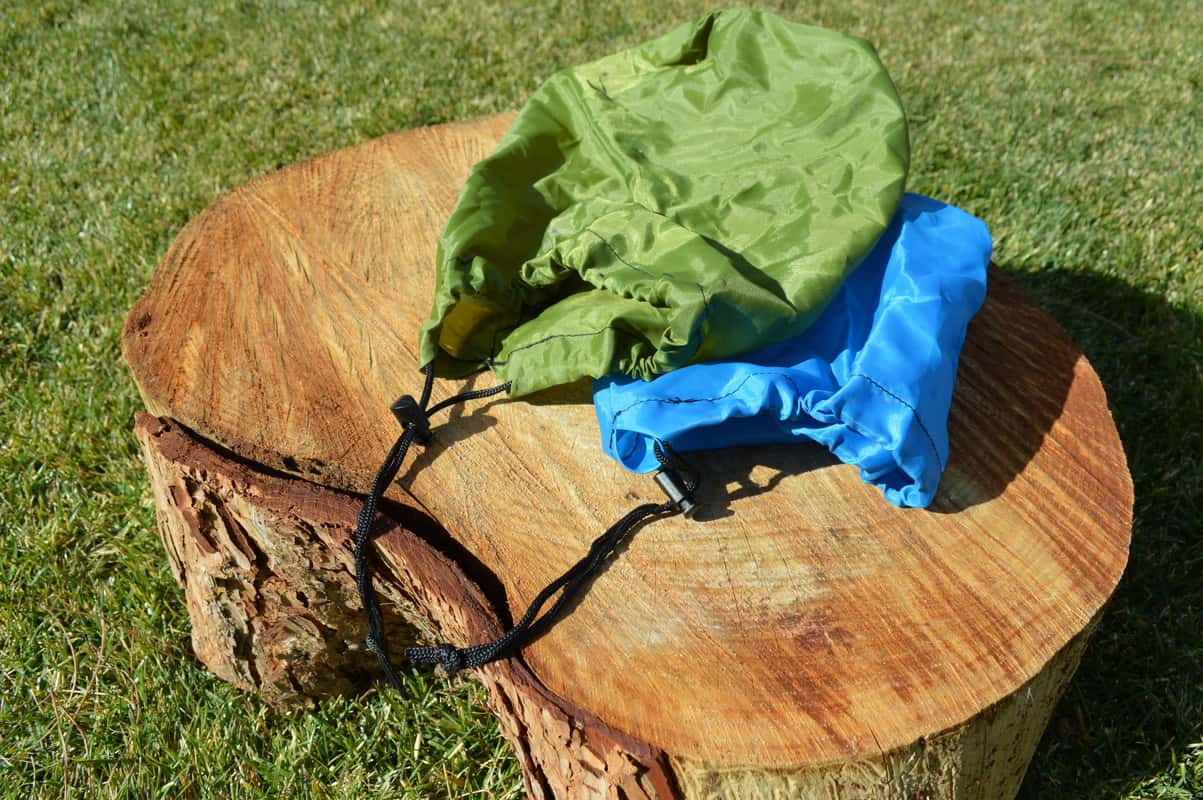
If you’re interested in seeing our full line of dry bags on Amazon, follow this link here. They all include a shoulder strap with a lifetime warranty, even for normal wear and tear.
I have a full write up on how to choose a dry bag that includes a different kind of material and features before you decide on purchasing one. This guide will help in determining what material and features you’ll need in a dry bag. Different styles of backpacking and situations will determine a good feature set on the bags.

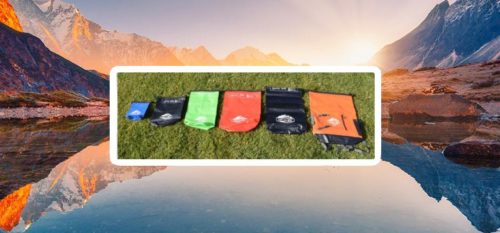
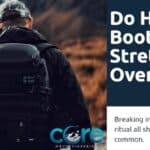
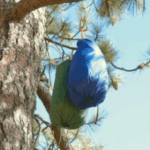




So I’ll be exploring/vacationing in not normal tourist areas of central America. I have nicer DSLR that’s not compact whatsoever, along with lenses. I have trust issues so I won’t be leaving my gear back at any hostel.
What size would you recommend for 1 camera and 4 lenses?
Hello Duane! It depends on the case or bag you’re going to keep your lenses in or if they have induvial padded bags. I think a 5-liter would be a little too small. It might be difficult to close the dry bag with three folds. I’d look into a 10-liter dry bag. Have fun!
Such a helpful guide, thank you! I’ve been considering buying some dry bags online for kayaking but keep putting it off as had no idea which size would be best, now I feel I can make an informed choice.
Hi!
Hubby and I are taking on our first backpacking trip. If I just want to store my sleeping bag, puffer, and dry clothes, would a 10L be sufficient?
We’ll both be getting our own bags.
We’re trying to go as light as we can.
Everything else should be protected from my packs raincoat if it does rain.
A 10L dry bag seems a little small for that. If the sleeping bag and jacket are goose-down, I can see that fitting. But if your sleeping bag is synthetic fill, you’re going to need a much larger bag.
Hello, would a 5L bag be good enough for a windbreaker sweater & pants, portable charger and 4 hours worth of snacks like trail mix and a pb&j sandwich?
A windbreaker and snacks would be fine for a 5l bag, but I’d probably go with a 10l if you’re going to include pants.
hi! if I want to put a towel, wallet, sunblock, phone, bathing suit, shirt, and big pair of sneakers, maybe a hat and snacks and water bottle, which size, please? thank you! please answer at your earliest convenience!
I’d say 10L should give you enough room for those items.